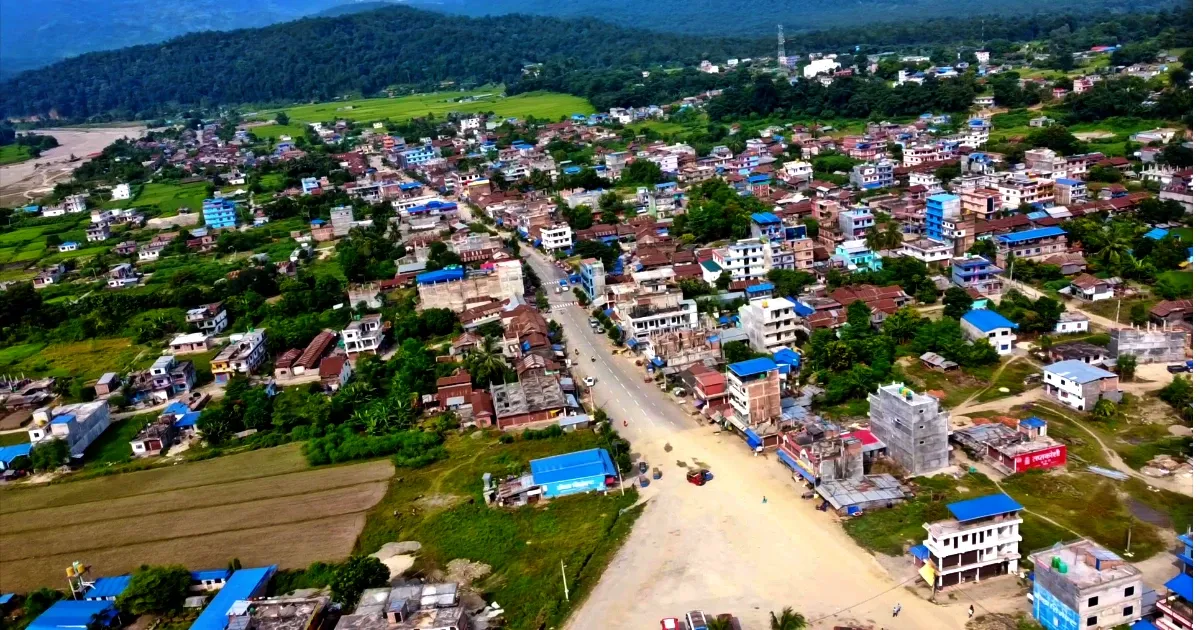Udayapur Beltar: Spotting the Beauty and Richness
 |
| Udayapur-Beltar |
Udayapur Beltar, nestled in the eastern part of Nepal, stands as a testament to the country's cultural and historical tapestry. Let's embark on a journey to discover the geography, history, culture, and various facets of this small but vibrant town.
Geography of Udayapur Beltar
Situated approximately 9 km east of Gaighat, Udayapur Beltar rests at an altitude of 320 meters above sea level, providing breathtaking views of the Himalayan foothills. The Kamala River gracefully flows nearby, enhancing the town's scenic beauty. The humid subtropical climate with hot summers and mild winters adds to the charm of this locale.
Historical Background
Udayapur Beltar's history traces back to the medieval period, witnessing the rule of Licchavi, Malla, and Shah dynasties. During the Malla dynasty, it flourished as a trade center, adorned with temples and monuments. The 18th century marked its inclusion in the Gurkha Kingdom, and it played a vital role in Nepal's fight for independence during the 20th century.
Cultural Heritage
Diversity defines Udayapur Beltar, with the indigenous Tharu community leading the cultural mosaic. Their unique language and traditions color the town, complemented by the presence of Brahmins, Chhetris, and Dalits.
The town celebrates a spectrum of festivals, from Holi and Dashain to Tharu-specific occasions like Maghi and Dhikurpooja. Temples like Bindhyabasini and Bhagwati add spiritual significance.
Economic Activities
Agriculture forms the backbone of Udayapur Beltar's economy, boasting productions of paddy, maize, and various vegetables. The town also hosts small-scale industries producing bricks, furniture, and handicrafts, contributing to the economic vitality of the region.
Transportation
Connected by well-established roadways, Udayapur Beltar sits along the Mahendra Highway, a key route spanning east and west Nepal. The convenience extends to the proximity of Biratnagar Airport, approximately 50 km away, facilitating regional connectivity.
Educational Facilities
Despite a relatively low literacy rate, Udayapur Beltar prioritizes education with institutions like Udayapur Multiple Campus and Udayapur Technical School providing learning opportunities.
Tourist Attractions
While not a tourist hotspot, Udayapur Beltar charms visitors with its natural allure. Surrounded by lush forests and hills, it offers ideal conditions for trekking and hiking. Pilgrims find solace in Bindhyabasini and Bhagwati Temples, while the Kamala River invites enthusiasts for fishing and rafting adventures.
Continuing our exploration of Udayapur Beltar, let's delve into the town's less-explored aspects, shedding light on its unique culture, economic endeavors, and potential as a destination worth discovering.
Cultural Diversity at its Core
Udayapur Beltar's cultural tapestry is interwoven with the vibrant hues of the Tharu community, who form the majority of the population. Their distinct language and age-old traditions bring a sense of authenticity to the town. Adding to the cultural mosaic are Brahmins, Chhetris, and Dalits, contributing to the diversity that makes Udayapur Beltar truly unique.
Festivals that Paint the Town
The rhythmic beats of festivals echo through Udayapur Beltar, providing a glimpse into the community's rich traditions. While Holi, Dashain, and Tihar are celebrated with zest, the Tharu community adds their own flair with festivals like Maghi and Dhikurpooja. Temples and shrines, especially Bindhyabasini and Bhagwati, become focal points during these celebrations, providing a spiritual and festive ambiance.
Economic Vibrancy
Agriculture flourishes in Udayapur Beltar, with fields of paddy and maize contributing to the town's sustenance. The entrepreneurial spirit is alive with small-scale industries engaging in the production of bricks, furniture, and handicrafts. These economic activities not only provide livelihoods but also add a dynamic layer to the town's character.
Connecting Pathways
Udayapur Beltar, though small, stands as a well-connected hub. The Mahendra Highway, a lifeline spanning across Nepal, passes through the town, facilitating trade and travel. The proximity to Biratnagar Airport further enhances accessibility, ensuring that the town remains connected to the broader landscape.
Nurturing Minds, Shaping Futures
Education, though facing challenges with a literacy rate of around 50%, holds a significant place in Udayapur Beltar. Institutions like Udayapur Multiple Campus and Udayapur Technical School stand as beacons of knowledge, striving to uplift the educational landscape of the town.
Dauntles Nature
While Udayapur Beltar might not be on the tourist map, it harbors hidden gems for those willing to explore. The lush green forests and hills surrounding the town beckon trekkers and hikers, offering an off-the-beaten-path experience. The Bindhyabasini and Bhagwati Temples, though not widely known, exude a serene charm that captivates pilgrims seeking spiritual solace.
In Conclusion
Udayapur Beltar, with its multifaceted identity, stands as a testament to the resilience of small towns. Beyond its size, it holds a rich cultural heritage, economic vitality, and natural beauty that invites curious souls to uncover the stories etched in its soil. As we conclude our journey through this hidden gem, one can't help but appreciate the nuances that make Udayapur Beltar a captivating destination.
Udayapur Beltar, though small, stands as a culturally diverse gem in Nepal's eastern landscape. Its rich history, economic contributions, and natural beauty make it an intriguing destination for those curious about Nepal's heritage. (code-box)
FAQs
A: No, Udayapur Beltar is not widely recognized as a tourist destination, but it has its unique attractions.
A: Paddy, maize, and various vegetables are the primary crops cultivated in the region.
A: Yes, the town has schools and colleges, including Udayapur Multiple Campus and Udayapur Technical School.
A: The town observes various festivals, including Holi, Dashain, Tihar, Maghi, and Dhikurpooja.
A: Agriculture, small-scale industries producing bricks, furniture, and handicrafts are key contributors.
A: The town boasts cultural diversity, primarily with the Tharu community, along with Brahmins, Chhetris, and Dalits.
A: The festivals, including Tharu-specific celebrations like Maghi and Dhikurpooja, bring a distinctive flavor to the town's cultural calendar.
A: Yes, small-scale industries engaged in brick production, furniture making, and handicrafts contribute to the town's economic vibrancy.
A: The town is well-connected via the Mahendra Highway, and the proximity of Biratnagar Airport enhances its accessibility.
A: The lush forests and hills surrounding the town provide opportunities for trekking and hiking, offering a unique adventure off the typical tourist trail.

